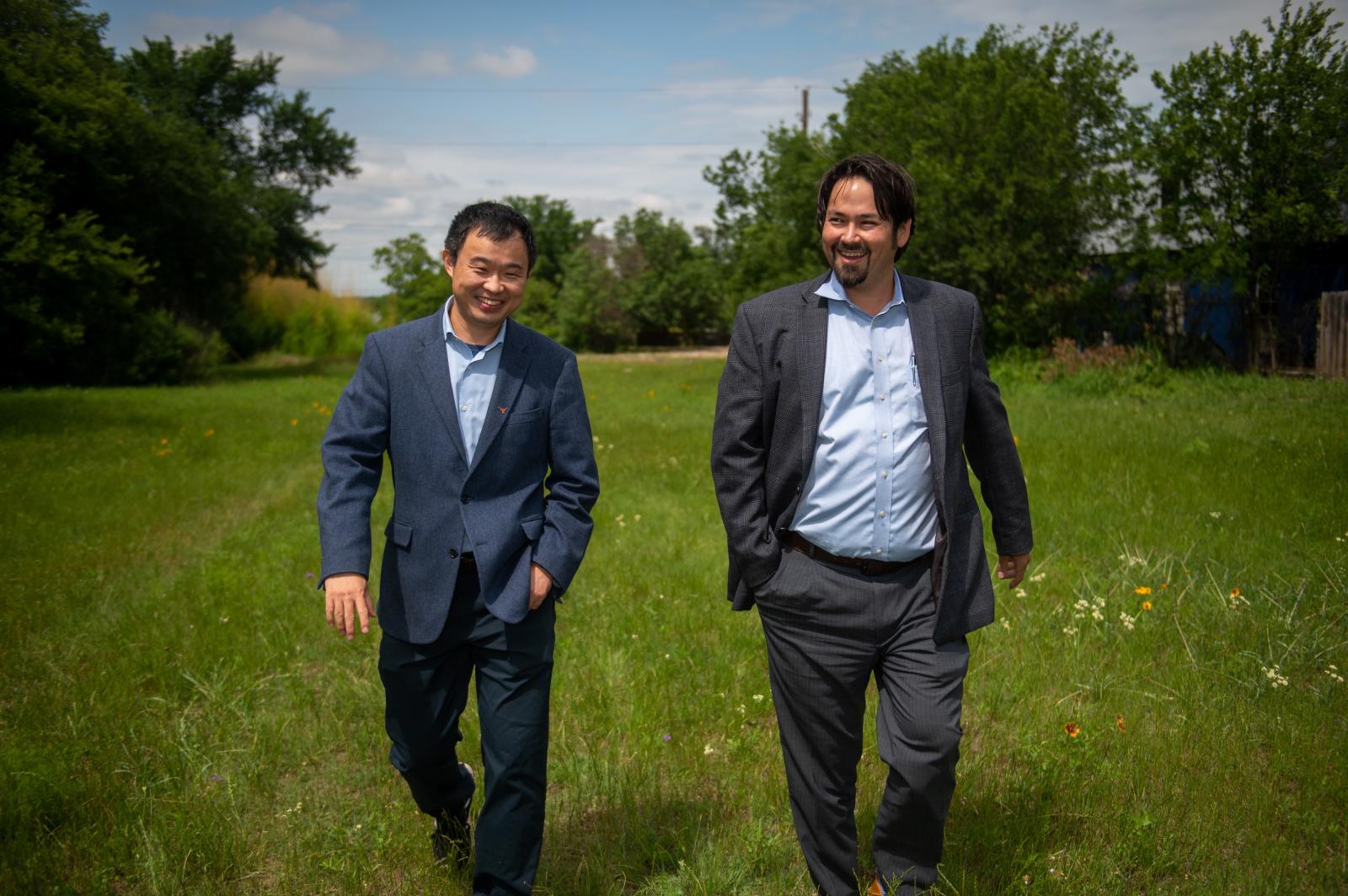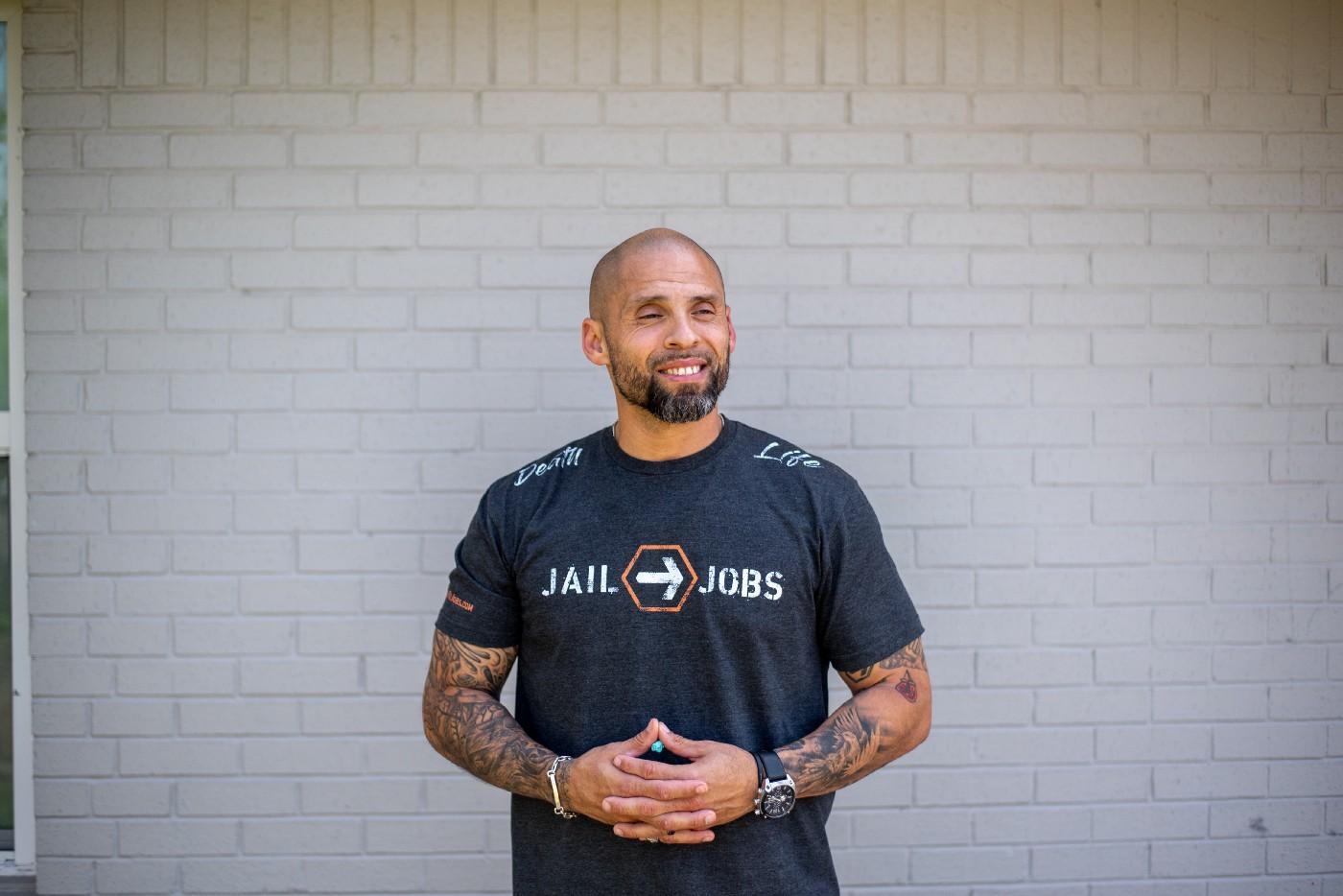
Joseph Diaz takes the 801 rapid bus every day from his home in Central Austin to the Georgian Acres neighborhood in North Austin to get to his job. The bus lets off at the North Lamar transit station on U.S. 183. Diaz, 22, walks across the highway to check in for work at Jail to Jobs on East Powell Lane.
He is one of the many people who rely on public transportation to get into and out of the area.
Georgian Acres is what University of Texas at Austin Community and Regional Planning Associate Professor Junfeng Jiao calls a “transit desert” — a term he coined to describe a region with high demand for transportation service but low supply. In the primarily Hispanic and low-income neighborhood along U.S. 183 and Interstate 35, commute times are 67% longer than the city average.
“People who live there mostly have to rely on bus service,” Jiao says. “However, they don’t have enough bus service to the neighborhood.”
To solve that problem, Jiao is working with the City of Austin and the nonprofit Jail to Jobs to bring more transportation options into the neighborhood by building a community mobility hub, which will benefit people like Diaz and others who live in or commute to the area. The solar-powered hub will have access to a neighborhood bus system, a bike-share station, e-scooter stations, and possibly Uber and Lyft parking spaces. In addition, it will offer free Wi-Fi and other community services like a mobile health clinic and food pantry.
“It would be really nice to have that here, close by,” says Diaz.
Taking a smart city approach
The project team identified Georgian Acres as the site for the mobility hub through a data-driven process looking at travel patterns, mobility infrastructure like bus and bicycle routes, and socioeconomic status to see the demand on transportation systems neighborhood-by-neighborhood across Austin.
“Rather than come into the Georgian Acres neighborhood and tell residents what they planned to build, they reached out to the community directly to find out its needs, hosting 20 engagement activities to see where residents thought the hub should go and what it should include.”
“Georgian Acres is bound on all sides by highways and high-speed roadways, making it difficult for community members to travel in or out of the neighborhood,” says Alex Payson with Austin Transportation’s Smart Mobility Office. “It’s also a traditionally low- to moderate-income community, which means that affordability is a significant barrier to transportation for these folks. Our hope is that this community hub project will provide a variety of affordable transportation options, empowering community members to select the modes that best meet their needs.”
However, rather than come into the Georgian Acres neighborhood and tell residents what they planned to build, they reached out to the community directly to find out its needs, hosting 20 engagement activities to see where residents thought the hub should go and what it should include.
“We want to make it very customized,” says Jiao. “We are not going to design a one-sized-hub-for-all. Their community might have a different travel pattern compared to downtown or the William Cannon area. We want to co-create to satisfy their unique demands.”
The project team, in addition to Jiao, also includes LBJ School of Public Affairs Professor of Practice Sherri Greenberg, School of Information Professor Ken Fleischmann and Department of Economics lecturer Devrim Ikizler.
Jiao, Greenberg and Fleischmann are all a part of the UT grand challenge Good Systems, which — as part of its many goals related to developing values-based AI — aims to use data and modeling to build smart cities. This means using information and technology to provide better services, from transportation infrastructure to emergency services, to local residents. Researchers analyze data such as traffic trends and EMS response times to identify the best ways to make investments that benefit communities equitably.
The team funded the planning and community engagement part of the project with a grant from the National Science Foundation. They recently were awarded a $1 million NSF CIVIC prize that will pay for the rest of the project, including building the mobility hub itself, which is slated to go up at a city-owned lot on Wonsley Drive near Gessner Drive.

The site is located behind Jail to Jobs, the project’s nonprofit partner, which works with youthful offenders to get them access to employment when they come out of incarceration. With the additional NSF money, the nonprofit would hire three to five of its clients to drive circulator buses through the Georgian Acres neighborhood — designing a set route that would reach the apartment complexes along I-35 and run to places like H-E-B. This will improve access to healthy food choices in what is also considered a food desert. Cap Metro has agreed to provide two wheelchair accessible vans for this purpose.
Jail to Jobs youth would also be responsible for maintaining aspects of the mobility hub, earning them a $15-per-hour wage.
“We are literally saving their lives, taking them off the street and teaching them a skill that can change the rest of their life,” says Jeremias Cooper, Travis County director for Jail to Jobs. “I would love to see this mirrored in other cities and in areas where transportation is an issue.”
A solution for growing cities
Many U.S. cities are experiencing similar problems today: people are forced to live far away from their jobs where home prices and rents are more affordable. It leads to what researchers and transportation officials call a “spatial mismatch between jobs and housing” and means that people have to commute long distances to work. In Austin, a lot of jobs are in the urban core downtown, far from where many live on the outskirts and in suburban neighborhoods.
“This creates the most problems for folks who don’t have the money for a personally owned vehicle or don’t have the money to take an Uber or a Lyft,” says Payson. “The point of community mobility hubs is to provide affordable transportation options so people can get from their door to the hub, the hub to work and back again, hopefully in a way that is affordable, timely, and comfortable.”
The aim is to make this project scalable, so that the concept can be implemented in other parts of town, while also providing resources that are unique to those areas. It could also inform how the City and Cap Metro decide how to develop their future transportation hubs as Project Connect, the new transit plan that includes a light rail system, gets off the ground.
“What we are working on is something that is relatively new,” says Jason JonMichael, Austin Transportation’s assistant director. “The regional traffic models that UT is working on help us to understand the demand on the transportation system now and into the future. No one has ever gone deep within the neighborhoods to figure that out. We are excited the NSF has the vision that this is a particular area where we need additional research and development.”
University of Texas at Austin, nonprofit Jail to Jobs and City of Austin transportation and other officials lay out plans for smart mobility hub. Video credit: Austin Transportation Department
Junfeng Jiao, Ph.D., is an associate professor in the Community and Regional Planning program and founding director of Urban Information Lab at the University of Texas at Austin’s School of Architecture. He is also the chair of the research grand challenge Good Systems. Jiao’s research focuses on urban informatics, smart city and shared mobility. He has used different technologies, including GIS, GPS, drone, smart phone, social media and wearable devices, to quantify cities and understand their impacts on people’s behaviors.

